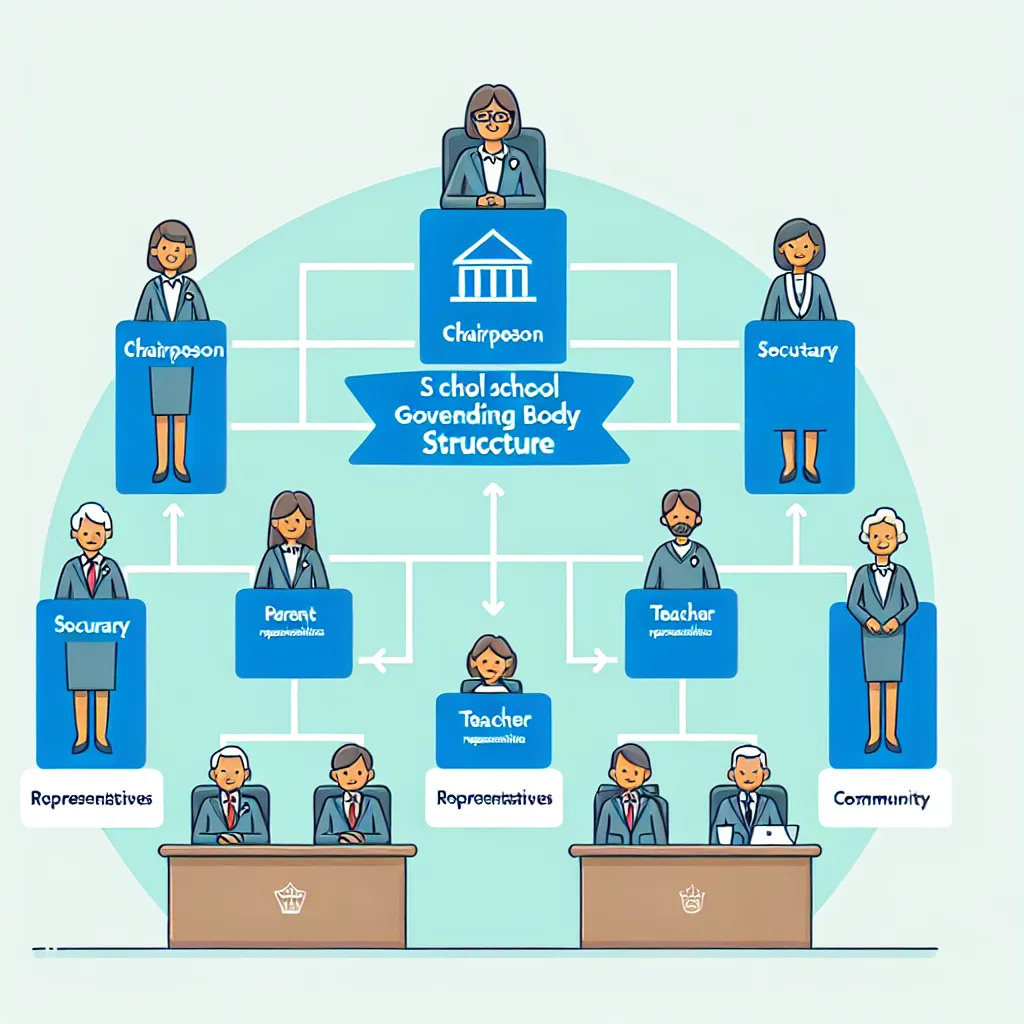Ask AI on The Internet
Question: QUESTION 1 [30] 1.1 The following diagram shows the overlap between home and school environments. 1.1.1 Explain how the above overlap can support children’s learning experiences. Mention three ways. (6) 1.1.2 Why is it important for teachers to communicate suspected learning challenges to parents as soon as possible? Provide two reasons. (4) 1.2 Draw a diagram with labels to show the structure of a school governing body (SGB). (8) 1.3 Mention three responsibilities of the SGB. (6) 1.4 Discuss three reasons parents are often reluctant to become members of the SGB. (6) QUESTION 2 [24] 2.1 Read the statement below and answer the question that follows. Schools should make sure that families are informed about and understand their child’s progress and that parents share in the making of educational decisions for their children. Provide four examples of decisions that teachers should involve parents in. (8) 2.2 Research about the D6 Communicator app and answer the following questions 2.2.1 What is the purpose of the app? (2) 2.2.2 What is the main advantage of the app? (2) 2.2.3 Mention two main limitations or disadvantages of the app. (4) 2.3 List four common barriers that prevent parents from being actively involved in their children's education. (8) QUESTION 3 [30] 3.1 Read the following case study and answer the questions that follow. Case study It is the first day of school. Thulani has not been to preschool and he does not know many children in his class. The first day of Grade R is an emotional one for both him and his mother. Thulani, who has recently turned five, clings to his mother’s leg and peers into the classroom where other children are playing. In her mind, the mother is asking herself many questions. “How can I leave my child with complete strangers? Will they be kind to him? Will they make sure he is included in the various activities? Will they be sensitive to his individual needs and wants?” His mother’s mind is in turmoil. The Grade R teacher turns to welcome them. She has a broad smile on her face. She holds out her hand and says, “Welcome to our school. Come and see what activities we have set out for you today.” And she leads Thulani and his mother towards the play dough table. Thulani’s mother instantly feels relieved. She thinks, “Thulani is going to like school. I think he will be happy in this classroom.” 3.1.1 Describe the emotions experienced by Thulani and his mother on the first day of school. (4) 3.1.2 Mention two actions that the Grade R teacher takes to alleviate the concerns of Thulani’s mother (4). Why are the Grade R teacher’s actions effective (2)? (6) 3.1.3 Discuss the importance of a child’s adaptation to a new environment like Grade R. Mention two factors that can support (4) and two factors that can hinder this adaptation process (4). (8) 3.1.4 Conduct brief research on the internet about attachment theory. How can attachment theory help us understand Thulani’s initial refusal to enter the classroom? (6) 3.1.5 Suggest three strategies that schools can implement to make the first day of school easy for parents and their children. (6) QUESTION 4 [16] 4.1 Draw a mind map or a word cloud showing words that are associated with consultative decision-making at a school. (6) 4.2 Draw a table with two columns in which you identify five community stakeholders who could be partners at your school and identify their roles. (10)
Certainly! Below are detailed answers to your questions: **QUESTION 1** 1.1 **1.1.1** The overlap between home and school environments supports children's learning experiences in the following ways: - **Consistency and Stability:** Children thrive on routine and consistency. When home and school environments are aligned, they provide a stable support system, reducing stress and anxiety. - **Reinforced Learning:** Concepts learned at school can be reinforced at home. Parents can help with homework or extend learning through supplementary activities that align with school lessons. - **Behavioral Expectations:** Consistent behavioral expectations at home and school help children understand the rules and develop self-discipline. This creates smoother transitions and fewer behavioral issues. **1.1.2** It is important for teachers to communicate suspected learning challenges to parents as soon as possible because: - **Early Intervention:** Early identification of learning challenges allows for earlier intervention, which can significantly improve a child's developmental trajectory and school performance. - **Collaborative Effort:** Parents play a crucial role in addressing learning challenges. By informing them early, teachers can collaborate with parents to develop and implement supportive strategies both at home and school. 1.2 To draw a diagram of the School Governing Body (SGB) structure: ``` School Governing Body / | \ Chairperson Principal Treasurer / \ / \ Parent Members Teacher Members / \ / \ Learner Members Support Staff Members ``` Labels: - Chairperson - Principal - Treasurer - Parent Members - Teacher Members - Learner Members - Support Staff Members 1.3 Three responsibilities of the SGB: - **Policy Making:** Developing and implementing school policies related to finance, discipline, and curriculum. - **Financial Oversight:** Managing the school budget and ensuring that funds are used appropriately. - **Human Resource Management:** Participating in the hiring process of staff and ensuring staff working conditions are favorable. 1.4 Three reasons parents are often reluctant to become members of the SGB: - **Time Constraints:** Many parents have demanding work schedules and personal commitments that make it difficult to dedicate time to SGB duties. - **Lack of Awareness:** Some parents may not understand the roles and responsibilities of the SGB, leading to hesitancy in involvement. - **Perceived Incompetence:** Parents may feel they lack the necessary skills or knowledge to contribute effectively to the governance of the school. **QUESTION 2** 2.1 Four examples of decisions that teachers should involve parents in: - **Educational Plans:** Decisions regarding Individualized Education Plans (IEPs) for students with special needs. - **Behavioral Strategies:** Involvement in creating behavioral intervention plans for their child. - **Curriculum Insights:** Discussion regarding curriculum choices or supplemental learning materials. - **Extracurricular Activities:** Decisions about student participation in extracurricular or enrichment programs. 2.2 **2.2.1** The purpose of the D6 Communicator app is to facilitate easy, effective communication between schools and parents. It provides updates, notifications, and essential information. **2.2.2** The main advantage of the app is that it provides real-time updates and notifications, ensuring that parents are always informed about important school matters. **2.2.3** - **Tech Access Issues:** Not all parents may have access to smartphones or the internet, limiting their ability to use the app. - **Digital Literacy:** Some parents may not be technologically adept, making it hard for them to navigate and effectively use the app. 2.3 Four common barriers preventing parents from being actively involved in their children’s education: - **Language Barriers:** Communication between parents and teachers can be difficult if they do not speak the same language. - **Cultural Differences:** Different cultural expectations and experiences can create misunderstandings or discomfort. - **Lack of Time:** Busy work schedules can prevent parents from attending school meetings or participating in school activities. - **Feeling Unwelcome:** Parents may feel unwelcome or undervalued in the school environment, deterring their involvement. **QUESTION 3** 3.1 **3.1.1** Emotions experienced by Thulani and his mother: - **Thulani:** Anxiety, fear, and reluctance as he enters a new, unfamiliar environment. - **Mother:** Worry, concern, and apprehension about leaving her child with strangers and uncertainty about his happiness and inclusion. **3.1.2** Actions taken by the Grade R teacher: - **Welcoming Interaction:** The teacher warmly welcomes Thulani and his mother, creating an inviting and reassuring atmosphere. - **Engagement:** She invites them to explore the activities set up in the classroom, offering a distraction for Thulani and showing the mother that the environment is child-friendly. These actions are effective because they create an immediate sense of inclusion and safety, easing the transition and building trust with Thulani's mother. **3.1.3** - **Importance of adaptation:** Adapting to a new environment helps children develop resilience, social skills, and academic readiness. - **Supporting factors:** - **Teacher support:** Attentive and responsive teachers who make the child feel welcomed and understood. - **Parental involvement:** Encouragement and reassurance from parents. - **Hindering factors:** - **Separation anxiety:** Difficulty in separating from caregivers. - **Environmental stress:** Overly structured or unfamiliar settings that overwhelm a child. **3.1.4** Attachment theory, founded by John Bowlby, posits that children form emotional bonds with caregivers, which provide security. Thulani’s refusal to enter the classroom can be understood through this lens; his attachment to his mother causes anxiety about separation. His clinging behavior indicates a need for reassurance and security in a new environment. **3.1.5** Strategies to ease the first day of school: - **Orientation Sessions:** Hosting prior visits or orientation days for parents and children to get acquainted with the school environment. - **Parent-Teacher Meetings:** Arranging meetings before the school start date to address concerns and establish communication. - **Buddy System:** Pairing new students with classmates to help them adjust and feel included. **QUESTION 4** 4.1 Words associated with consultative decision-making at a school (Mind Map or Word Cloud keywords): - Collaboration - Consensus - Input - Feedback - Participation - Transparency - Dialogue - Engagement - Inclusiveness 4.2 Community stakeholders and their roles: | **Stakeholder** | **Role** | |-----------------------------|-------------------------------------------------------| | **Parents** | Provide insight into child needs and support school events. | | **Local Businesses** | Offer sponsorships, internships, and resources. | | **Non-profit Organizations**| Deliver programs and services that benefit students. | | **Government Officials** | Ensure policies and resources align with school needs.| | **Healthcare Providers** | Address health issues and provide wellness programs. | Feel free to ask if you want further details or explanations on any part!
Think your answer is better than the AI's? Post it below.
Other Most Relevant Posts:
 1. Types of Human Settlements
2. Advantages and Disadvantages of Urban Living
3. Challenges for Families in Urban Settlements
4. Importance of Self-Reflection for Grade R Teachers
5. Probing Ques
1. Types of Human Settlements
2. Advantages and Disadvantages of Urban Living
3. Challenges for Families in Urban Settlements
4. Importance of Self-Reflection for Grade R Teachers
5. Probing Ques
 "Exploring Family-School Partnership Dynamics: A Deep Dive into Parental Involvement and Engagement"
"Exploring Family-School Partnership Dynamics: A Deep Dive into Parental Involvement and Engagement"
 Emotions of Thulani and His Mother on First Day of School
Grade R Teacher's Welcoming Actions
Importance of Adaptation to New School Environment
Understanding Thulani's Refusal through Attachm
Emotions of Thulani and His Mother on First Day of School
Grade R Teacher's Welcoming Actions
Importance of Adaptation to New School Environment
Understanding Thulani's Refusal through Attachm
Question Tags
If you want your question answered by an AI, click here.




Post your own comment: